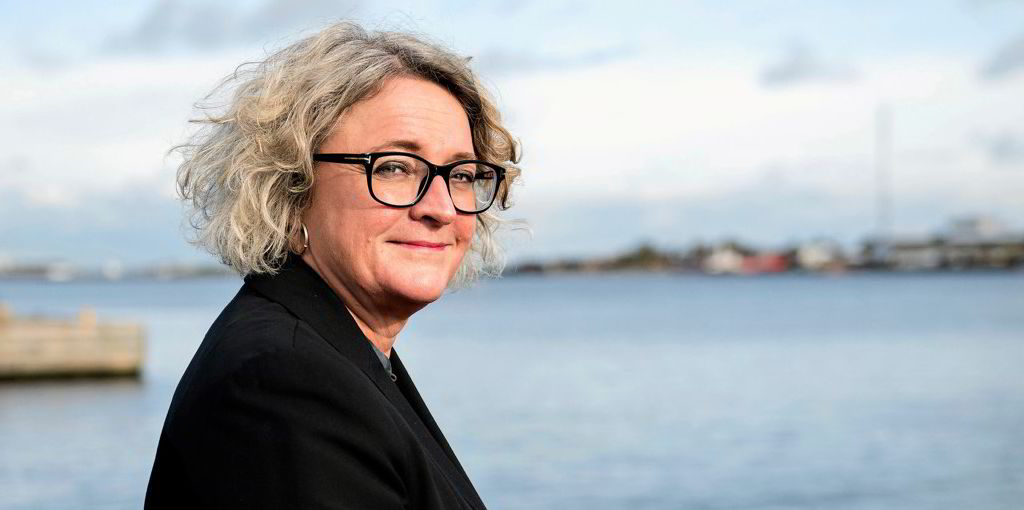Denmark is the world’s fifth-largest shipping nation in terms of operated tonnage. But, on top of being a force to be reckoned with on the high seas, it is a formidable base for shipping on the shore.
As well as its long-standing shipowning community, the country has become an international hub for maritime tech start-ups in recent years.
Added to this, more vessels than ever are adopting Denmark as their home under the Danish flag, following tweaks made to the registration process and the country’s tonnage tax regime.
Shipping remains Denmark’s largest export industry and the value of Danish carriers’ exported services reached an all-time high of DKK 240bn ($38.1bn) last year.
That is equivalent to 11% of national GDP, which shows that the industry packs a punch for a country with a population of 5.7m.
What is changing?
But Denmark’s international shipping offering is changing as well as growing, helped by its leadership in the renewable-energy sector, according to Anne H Steffensen, chief executive of shipowners’ association Danish Shipping.
“Offshore wind is really taking off as a growth area for Danish shipping companies,” she told TradeWinds.
“The Danish west coast has served as an ideal hub for operations, maintenance and crew transfer for the offshore wind farms in northern Europe. Our companies have become world leaders in maritime offshore services and are now expanding to new markets outside Europe.”
Over the past decade, the Denmark-flag merchant fleet has grown by 82.2% in terms of gross tonnage.
At the end of last year, the country's registered fleet numbered 731 ships with a combined 21.3m gt. The size of the fleet grew by 4.8% during 2019 in terms of gross tonnage.
Forty-five Danish shipping companies are fully or partially employed in the offshore wind sector, according to Steffensen, who expects that number to grow in the coming years.
“We have the expertise and the hardware to make a difference, both when it comes to installing, maintaining and the decommissioning of the offshore wind farms,” she said.
But, following a record 2019, Danish shipping has encountered challenges this year, mainly caused by the global Covid-19 pandemic.
“The high level of uncertainty for the global economy and trade is no doubt a challenge that we will have to live with for some time,” Steffensen said.
The most critical challenge posed by the pandemic has been the crew-change crisis.
“We owe our seafarers a great ‘thank you’ for keeping world trade afloat, while not being sure of when they could return to their home and family,” she said.
‘We have come a long way’
“The crew-change issue has not been easy to cope with for the shipping companies either. We’ve spent a lot of time with our members and the authorities discussing how to solve this problem. Even though we still see some challenges, we have come a long way.”
Denmark’s well-educated workforce and seafaring and shipowning heritage are a big part of what makes it an international maritime hub, according to Steffensen.
“We have a complete maritime cluster, and the political system is generally shipping-friendly,” she said.
Last year was a record one for Denmark's international shipping offering. Danish companies exported shipping services worth a combined DKK 240bn ($38.1bn) in 2019 — the highest level on record.
Crucially, the industry has been able to maintain its influence and importance regardless of who is in government.
This has enabled Danish Shipping to work with government to make the flag more competitive and attractive for shipowners by removing certain special rules.
The country’s offshore sector is now allowed to join the Danish International Ship Register and tonnage tax scheme, which has had significant impact on the Denmark-flag fleet.
Steffensen added that the government is keen to work with the industry to help it meet its environmental goals too.
“[The government] are strong supporters of the work in IMO to find a way to significantly reduce global shipping’s carbon footprint and have also set a goal to reduce Denmark’s CO2 emissions by 70% in 2030,” she said.
“This ambition is followed up by investment in research and development trying to find new green solutions.
“That’s a benefit for our industry, as we are keen on finding a greener future for shipping and need the political support on this agenda.”
Steffensen said the country is also home to a “booming” maritime tech sector.
“We see many maritime tech start-ups partnering with established shipping companies trying to find common ground in the green transition of the shipping and maritime industry.”
For instance, she said Danish ro-ro giant DFDS has invested in start-up company Mash Energy to develop a commercially viable biofuel.
“Shipping is facing new challenges — ambitious climate targets, increasing environmental regulation, digitalisation and new business models, to mention a few,” she said.
“Therefore, innovation, research and development is key for a strong maritime nation like Denmark to compete in a global business feeling the winds of change.”





